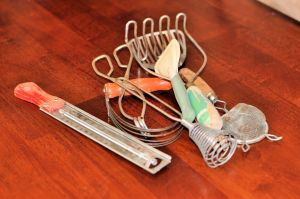Check out any frugal living website and you’ll see that buying generic is the end-all way to go to save money. But is it? What if it’s awful and it gets tossed? How much have you saved buying that product? This doesn’t mean that buying more expensive products is the answer either. A name-brand product is not necessarily better. It might be but it might not.
According to the Private Label Manufacturers Association, you can save about 30% per week on the average shopping trip buying generic or store brand products. That’s a significant savings and why wouldn’t everyone do this simple thing to save money?
Sometimes we justify buying more expensive products by telling ourselves that we get what we pay for. With enough thought on it, I’m sure we can convince ourselves of almost anything that will justify our actions. I read an article recently (without the foresight to bookmark it for reference) that stated that buying over the counter medications on sale reduces the effectiveness of the drug. Somehow, paying less translates in our head to lower quality even on identical items. I don’t agree. I feel fortunate when I find something I need on sale when I need it.
Probably the most dangerous position to our budget is telling ourselves that price equals quality to justify a purchase we can’t afford. Then, after spending more than we should have, we adopt a smug attitude and pat ourselves on the back for our shopping savvy. What a trap that thinking is!
If price does equal quality, then when something is in short supply, and the price is higher, it should be of higher quality. How could it? It’s the same item that is suffering some hiccup in supply and demand has increased the price. Yesterday, when the price was lower, it wasn’t a different product. Today, it’s the same product with a different price.
There are some products that you can be assured are as good as national brands because they are regulated. The Food and Drug Administration regulates things like medications, baby formula, and sunscreen. It is assured that these products are identical to the more expensive items next to them on the shelves. No one needs to question the quality and effectiveness of these products because it’s been done for us. Sometimes government intervention is a good thing.
So, what’s the answer about generics? Try them. Try them from different stores. Not all generics are equal. I learned decades ago not to buy the bargain canned tuna. It may be much better now, but it was so bad then (can you say inedible?) that I never bought it again. It’s not worth the savings for me to try it. I’m going to be stubborn on this.
There are some things that I just prefer the national brand. It’s not that the generic is so awful, like the canned tuna. It’s just that I prefer the taste of some products to the generic brands. Peanut butter is one of those products and, surprisingly, oatmeal and oat O’s cereal. Neither of those generic products taste as good to me as the national brand. If I was feeding a family, my attitude might be different and the savings would outweigh my personal tastes.
Where I find little difference is most canned items. Things like canned fruit, tomatoes, beans, and vegetables are close enough to their more expensive counterparts that I buy them almost exclusively. (OK, I have to admit that I rarely buy canned vegetables. I prefer frozen but there are some in my pantry.) I look for the low-salt or low-sugar varieties, and if the generic meets that qualification, it makes its way into the cart.
So, you might ask if there’s a point to all of this? Well, yes. In our pursuit to live well and still save money, generic products can help us along. They can also stop us short. Frugality is a lifestyle and, sometimes, it takes a bit of effort to find the frugal way that works for us. If it doesn’t work, we don’t do it and where are we then? Back to square one? Back to overspending?
Do you buy generics? Be sure to leave a comment.









